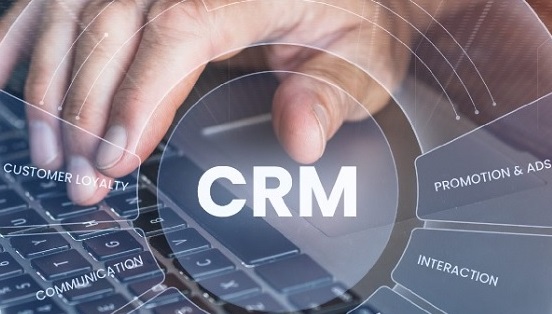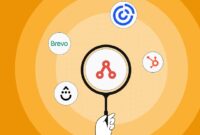Analytics and reporting in CRM (Customer Relationship Management) is like having a treasure map in a sea of customer data. It helps you find the gold buried deep within the information you collect. Let’s break down how to effectively use analytics and reporting to grow your business.
What is CRM Analytics?
CRM analytics is like having a crystal ball for your business. It’s all about gathering and analyzing data from customer interactions to see what works and what doesn’t. Think of it as your personal detective, shining a light on customer preferences, behavior, and trends. The more you know about your customers, the better you can serve them.
So, CRM analytics is all about understanding your customer data. It uses technology to analyze patterns, trends, and behaviors of customers. Think of it as having a pair of binoculars that helps you see what your customers want, when they want it, and how they interact with your business. With this information, you can make smarter decisions that benefit both you and your customers.
Why is Reporting Important in CRM?
Reporting is the snapshot of your CRM activities. It tells the story of how well your business is connecting with customers. Think of it like a report card. Just like students need to show their grades to get better, businesses need to track their performance to improve. Accurate reporting helps in identifying strengths and weaknesses, allowing teams to make informed decisions.
So, reporting is the way you present the data collected from CRM analytics. It’s like telling a story with a beginning, middle, and end. Clear and effective reporting lets you see what’s working and what’s not. Without it, you’re just swimming in data without knowing which direction to go.
Why is Reporting Essential?
- Spot Trends: Reporting shows you trends over time. You can observe how your marketing campaigns are performing and which products customers love the most.
- Identify Problems: If something’s going wrong, a good report will highlight it fast. You can tackle issues before they grow too big.
- Improve Customer Experience: By understanding customer behavior, you can tailor your services to meet their needs better. Happy customers lead to repeat business!
Key Metrics to Track
When using CRM, certain metrics are worth keeping an eye on. Here are some key ones:
Customer Acquisition Cost (CAC)
This tells you how much it costs to bring in a new customer. It includes marketing expenses, sales team costs, and other related expenses. Shortening CAC means you can get more bang for your buck.
Customer Lifetime Value (CLV)
CLV predicts how much money a customer will bring to your business throughout their relationship with you. It helps you understand who your most valuable customers are and how to nurture those relationships.
Conversion Rate
This is the percentage of leads that turn into actual customers. A higher conversion rate means your marketing strategies are hitting the mark. Tracking this helps you figure out what’s working.
Using Data for Better Decision-Making
Data isn’t just a bunch of numbers; it’s a treasure chest of insights. With the right analytics tools, businesses can transform raw data into useful information. For example, if you notice that customers are interacting more with certain products, you can focus your marketing efforts there. It’s like tuning a guitar. You adjust the strings to make beautiful music. Similarly, you adjust your strategies based on what the data shows you.
Once you have your reports, it’s time to act. The data you gather isn’t just for show; it should drive your business decisions:
Tailored Marketing Efforts
Use analytics to guide your marketing campaigns. If customers are engaging more with a specific product, push it harder in your ads. This targeted approach can lead to better results.
Improve Customer Interaction
When you understand your customers’ needs, you can create personalized experiences. This could mean sending tailored emails or offering promotions that really speak to them. It’s like having a conversation where you already know what the other person wants to talk about.
Visualizing Data for Clarity
Data visualization is crucial in CRM reporting. Charts and graphs turn complex data into easy-to-understand visuals. It’s like turning a complicated recipe into a simple step-by-step guide. When you can see trends at a glance, decision-making becomes a lot easier. Not only does this boost understanding, but it also helps in communicating insights with your team.
Best Tools for CRM Analytics and Reporting
There are several tools that can make CRM analytics and reporting smooth and simple. Here are a few popular options:
- Salesforce: Widely known for its comprehensive features, it offers excellent reporting capabilities.
- HubSpot: Great for small businesses, it provides easy-to-read dashboards.
- Zoho CRM: Offers valuable insights at an affordable price.
These tools allow businesses to gather insights without diving into technical complexities.
The Future of CRM Analytics
As technology keeps evolving, CRM analytics will only get smarter. Businesses that embrace these tools will stay ahead of the competition. By understanding customer needs and preferences through analytics and reporting, companies can create better experiences. It’s not just about surviving; it’s about thriving in the world of business. With the right focus on data, every business can tell a compelling story that draws in customers and keeps them coming back for more.
Conclusion
Analytics and reporting in your CRM business is vital. They help turn raw data into actionable insights. By understanding the metrics and trends, you can drive better decisions, target your marketing efforts, and ultimately enhance customer satisfaction. Like a seasoned navigator, a good grasp of analytics will guide your business to success. Embrace it, and watch your business thrive!



